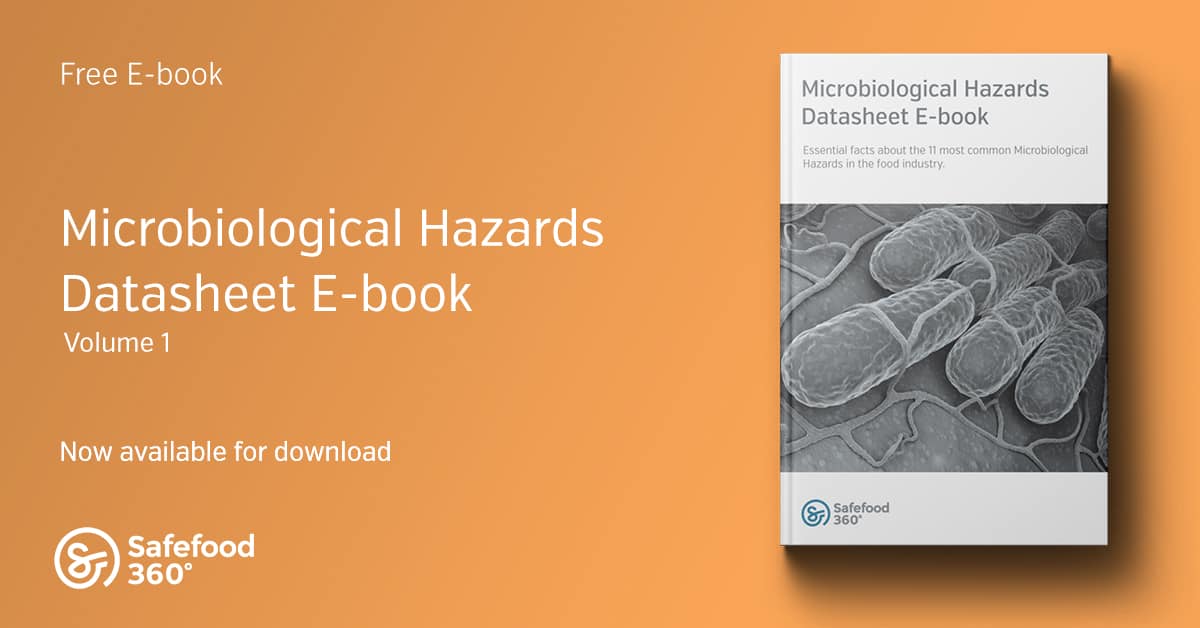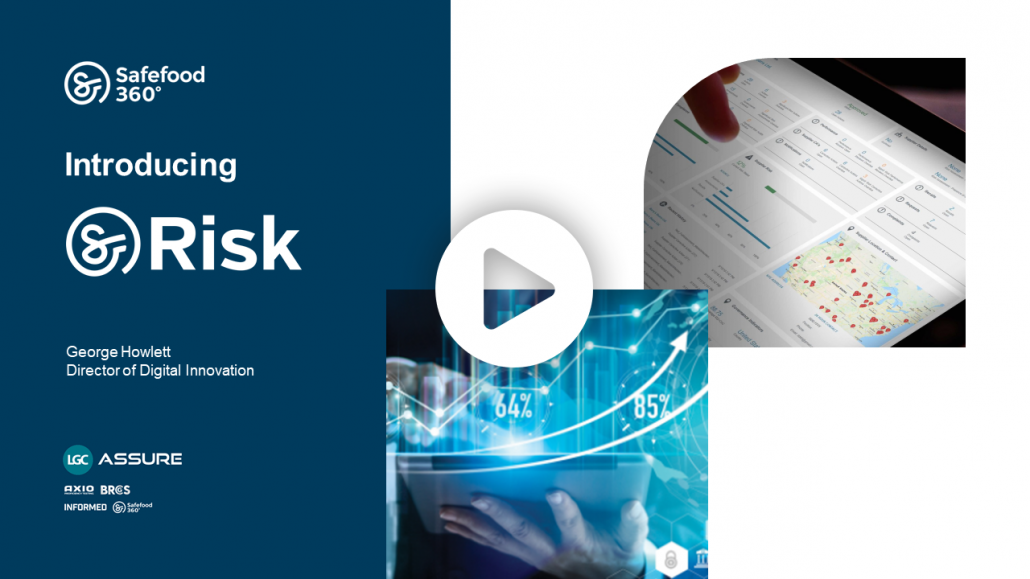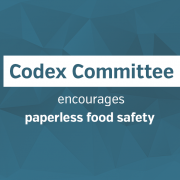December 2021 Food Safety News and Industry Round-up
SQF 9 recognized by GFSI
The SQF Edition 9 has successfully achieved recognition against GFSI’s Benchmarking Requirements Version 2020.
The recognition encompasses a large amount of SQF codes, including the farm to fork codes of SQFI.
The GFSI Benchmarking is a procedure where a food safety Certification Program Owner (CPO) is compared to the GFSI Benchmarking Requirements.
The process is designed to be executed in an independent, unbiased, technically proficient, and transparent manner.
A program is officially recognized by GFSI when it has been verified that it meets every single GFSI benchmarking requirement, both in procedures and in operations.
For a list of SQF recognized schemes, click here
Interested in BRCGS? Click here to speak to someone
FDA Update
FDA release response plan to combat foodborne illness outbreaks
Building on the New Era of Smarter Food Safety Blueprint, the FDA has developed a plan for Foodborne Outbreak Response.
The plan is designed to help the FDA and their partners “enhance the speed, effectiveness, coordination and communication of foodborne outbreak investigations”.
The Foodborne Outbreak Response Improvement Plan will focus on four main priority areas which it hopes will have the most impact on human-food-associated foodborne illness and outbreaks. These are:
- Tech-enabled product traceback
- Root-cause investigations
- Strengthening analysis and dissemination of outbreak data
- Operational improvements.
Read Statement from FDA Deputy Commissioner, Frank Yiannas
More information on the Foodborne Outbreak Response Improvement Plan
Note: Safefood 360° offers food businesses a variety of technological solutions that can assist with these areas. Click here for more information.
FDA issue proposed rule to enhance the safety of agricultural water used on produce
The FDA proposed a new rule to enhance produce safety having recognized that there is an increase in foodborne illness outbreaks linked to pre-harvest agricultural water.
The new rule requires farms to conduct comprehensive assessments that help them identify and mitigate hazards in water.
If finalized, the rule would change certain requirements for produce and farms subject to the produce safety rule other than just sprout operations.
The FDA will work closely with all stakeholders for education and training if the rule passes.
Read the new FDA proposed rule
Final rule issued for Laboratory Accreditation for Analyses of Foods
The FDA has issued a final rule for Laboratory Accreditation for Analyses of Foods (LAAF).
The LAAF rule, introduced under FSMA, applies to certain laboratories investigating food safety concerns and does not affect routine environmental and product testing.
A few steps will take place before the new rule is implemented as new laboratory regulations need to be in place before new lab testing can be required.
After the requirements are in place, the FDA will allow 6 months’ notice to laboratories.
US E.Coli outbreak continues as investigations increase
The FDA has traced an outbreak of E.Coli in the US to a number of small farms in two geographic areas.
With two more states reporting incidents, the number of states now affected sits at nine with a total affected case count of 14, with four admitted to hospitals.
Three have developed a potentially fatal type of kidney failure called hemolytic uremic syndrome (HUS).
The investigation remains open and ongoing.
To learn more about the E.Coli patient timeline

Food prices in Canada set to rise in 2022
Canada is forecasted to experience cost price increases at an average of 5%-7% which will be reflected in 2022 – the highest increase in 12 years.
It is expected that food price increases will be higher than the national average in Alberta, British Columbia, Newfoundland and Labrador, Ontario, and Saskatchewan.
The price increase is accredited to food supply disruptions, climate change, labor force challenges, high inflation, and food transportation issues.
Salmonella the cause of a quarter of EU outbreaks
An EU report has indicated that Salmonella alone caused almost a quarter of foodborne illness incidents in 2020.
The most common products that spread infection were eggs, egg products, and pig meat.
Other significant cases and concerns were Norovirus in crustaceans and Listeria monocytogenes in fish.
Although foodborne outbreaks, in general, decreased nearly 47% from 2019 to 2020, just five EU countries accounted for more than three-quarters of the total affected cases.
The decrease in cases has been mostly attributed t a lower exposure of contaminated food as a result of the Covid-19 pandemic and subsequent shutdowns.
The European Union One Health 2020 Zoonoses Report
Learn more about other biological hazards with our free Safefood 360° datasheets
Swedish Salmonella outbreak over as cases rise elsewhere
A salmonella outbreak in Sweden has ended without a conclusion on the source of the infection.
Without any new cases since late October, when 40 people became ill, Sweden has deemed the infection spread to be complete.
Elsewhere, a multi-country outbreak linked to Syrian exports of tahini and halva is being investigated with 41 new cases found.
Despite product recalls, health officials are heightened to the fact that more cases may come due to the long shelf life of affected products.
UK UPDATE
UK sees rise in non-compliant US products
UK authorities have issued a warning due to a rise in non-compliant food & drink beverages being imported from the United States.
The concern comes following random sampling of imports and the occurrence of incidents.
The non-compliance has been attributed to a misunderstanding of the laws between the two countries following Brexit as the affected products contain additives in products they are not authorized for use in, or their presence at levels that exceed the permitted maximum limit, as well as labeling deficiencies.
Norovirus identified as the highest-burden on UK society
Norovirus has been ranked the highest in affecting UK citizens in a Food Standards Agency ranking of 13 pathogens.
Selections took place through surveys, workshops and panel discussions through various teams of the FSA.
A second panel on the societal burden and causes of infectious intestinal disease (IID) in the UK runs through 2025 and will provide updated information on the effect of illness.
Learn more on the effect of Norovirus in the UK
FSANZ to create APAC Food Safety Forum
Food Standards Australia New Zealand (FSANZ) has received nearly a half a million-dollar grant to establish a food safety forum from the Department of Agriculture, Water, and Environment.
This international forum will feature members from Australia, China, the Republic of Korea, Japan, and Singapore.
The purpose of the forum is to “bring together countries from the Asia-Pacific region and to permit food safety and standards agencies in different countries to work together in building international regulatory standards.”
The hope is to allow different countries to come together and enhance two-way trade in the region.
New China import rules cause confusion
Manufacturers, distributors, agents, and brokers who import into China have been left scrambling to meet a January 1st deadline for new import rules.
China’s customs authority published new food safety rules in April stipulating all food manufacturing, processing, and storage facilities abroad need to be registered by year-end for their goods to access the Chinese market.
However, details on the procedures were only released in October of 2021 along with a web platform for self-registry in November 2021, which has contributed to the perceived confusion.
More information on the new regulations









Leave a Reply
Want to join the discussion?Feel free to contribute!